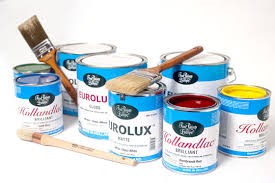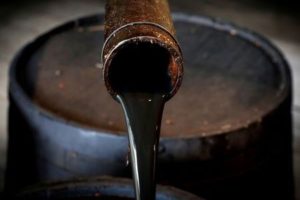Lead stearate is a salt of stearic acid and is sometimes referred to as the ‘lead soap’ of stearic acid. It occurs in the form as a powdery white solid with a slight fatty odor. It has a very niche use in the plastics, paint and varnish industry and has to be handled carefully because it is toxic by inhalation and ingestion. China and India are the primary producers and exporters of lead stearate. Lead Stearate Pb(C17H35COO)2 and Dibasic Lead Stearate, 2PbO, Pb(C17H35COO)2 are basic lead soap of commercial stearic acid. These are versatile combined lubricants and heat stabilizers for PVC. They have wide application as a lubricant for Plasticised PVC compounds, particularly cable covering. For rigid PVC applications, it is necessary to use a well-balanced lubricant system. LS is primarily of interest as a lubricant in PVC compound since it has only moderate heat stabilizer properties when used alone. It is generally used in conjunction with other stabilizers. Lubricants are essential for the majority of PVC fabrication methods by the very nature of the polymer. Lead Stearate acts as an efficient lubricant for many such processes.
Manufacturing Process:
Yellow lead or lead acetate can be added to stearic acid to obtain lead stearate. On adding water and an accelerant to the mixture and stirring continuously, the salt lead stearate will be produced. Lead stearate can be dewatered using a vacuum pump to obtain the fine dried powder. Since lead and lead compounds can directly react with stearic acid, the cost of such a process is low and the technology required for processing the product formed is not very complex. Addition of water and accelerants ensures high product yields and high efficiency. Hence, this process is generally used for synthesis of lead stearate.
Alternatively, fixed ratios of caustic soda and stearic acid can be dissolved in hot water and heated to generate sodium stearate (commercial soap). The addition of lead nitrate solution at the same temperature results in the formation of lead stearate. This process does not offer any distinctive benefits over using lead directly, but it can be used in soap production factories with surplus capacity of caustic soda. Dehydration, drying and pulverization are common means used to obtain the final commercial product.
Lead Stearate Application
Lead Stearate is used as a drier in paints and varnishes which are oil based. They help to speed up the polymerization and oxidation processes and hence find great use in the manufacture of these products.
In the plastics industry, lead stearate is used as a lubricant and heat stabilizer. For plasticized PVC compounds such as those used in the manufacture of cable covers, lead stearate is popularly used due to its ability to confer heat stabilizer properties to the produced plastics. Vinyl polymers also make use of lead stearate for heat stabilization.
Additionally, lead stearate is used as a corrosion inhibitor in products derived from petroleum.
| PRODUCT IDENTIFICATION | ||
| CAS NO. | : | 1072-35-1 |
| EINECS NO. | : | 214-005-2, 231-068-1 |
| FORMULA | : | Pb(C18H35O2)2 |
| MOL WT. | : | 774.152 g/mol |
| H.S. CODE | : | 2915.70 |
| SYNONYMS | : | Stearic acid, lead salt; Octadecanoic acid, lead salt;Lead(II) n-octadecanoate; Lead (II) stearate; Stearinsäure, Bleisalz (German); ácido esteárico, sal de plomo (Spanish); Acide stéarique, sel de plomb (French); |
| CHEMICAL AND CHEMICAL PROPERTIES | ||
| PHYSICAL STATE | : | white powder |
| MELTING POINT | : | 104 - 108 C |
| SPECIFIC GRAVITY | : | 1.4 |
| SOLUBILITY IN WATER | : | Slightly soluble in water (soluble in hot alcohol) |
| NFPA RATINGS | : | Health: 2; Flammability: 1; Reactivity: 0 |
| STABILITY | : | Stable under ordinary conditions |
| SALES SPECIFICATION | ||
| APPEARANCE | : | white powder |
| LEAD CONTENT | : | 28.0 ± 2.0% |
| FREE FATTY ACID | : | 1.0% max |
| WATER | : | 1.0% max |
| PARTICLE SIZE | : | 99.0% ( 200 mesh) |
| MELTING POINT | : | 103 - 108 C |
| TRANSPORTATION | ||
| PACKING | : | 25kgs in bag |
| HAZARD CLASS | : | 6.1 (Packing Group: III) |
| UN NO. | : | 1564 |




